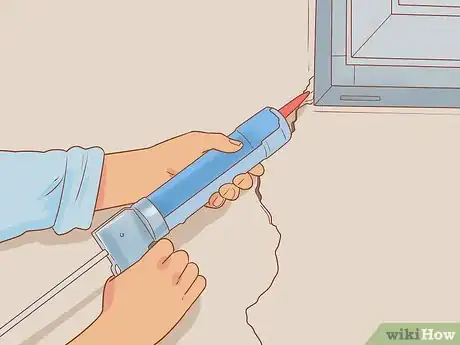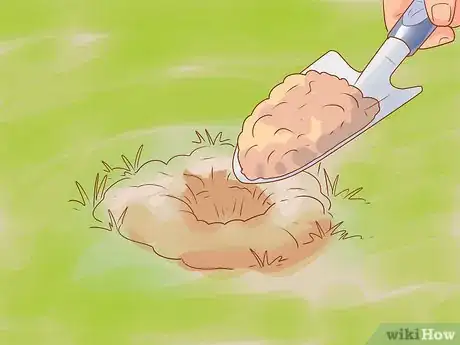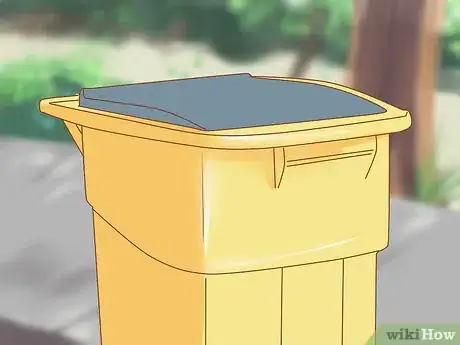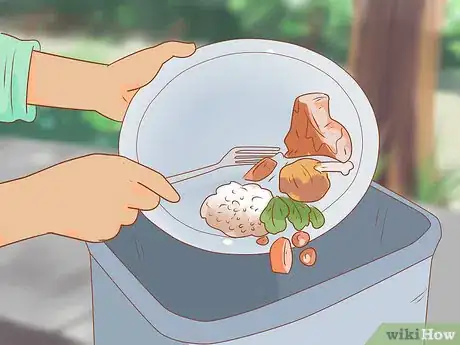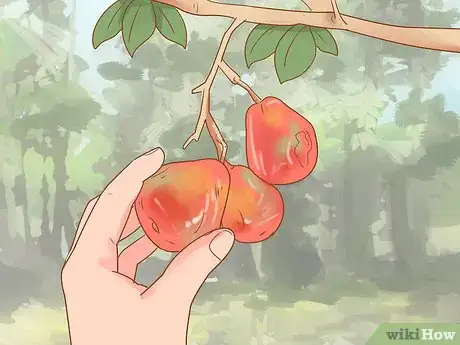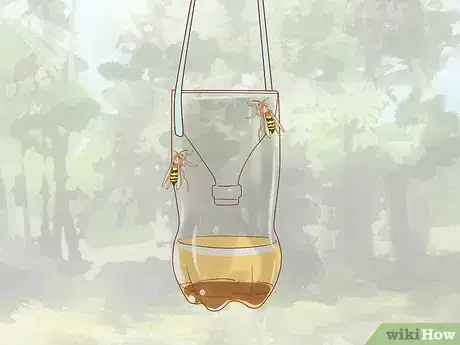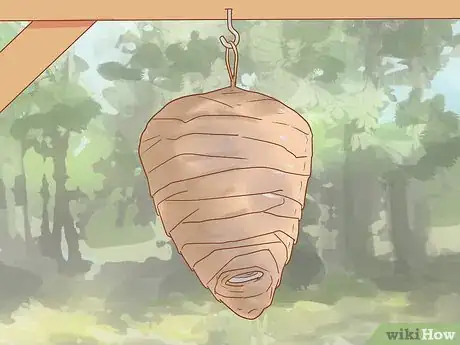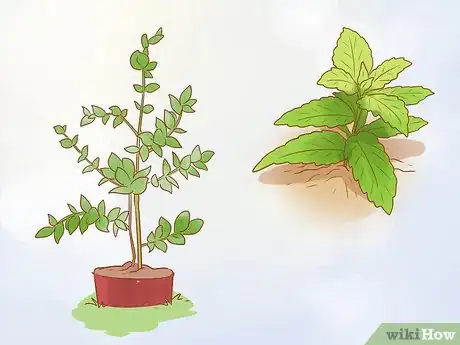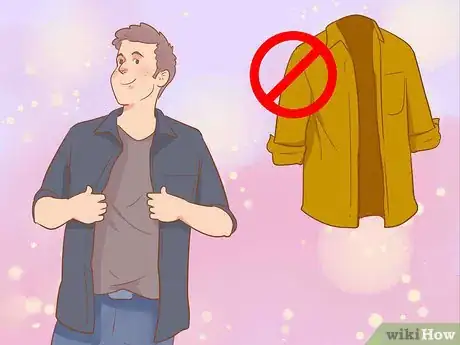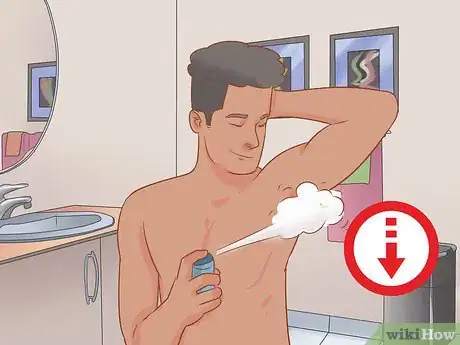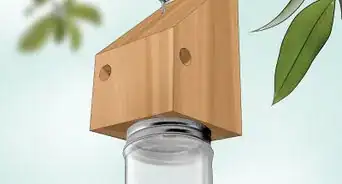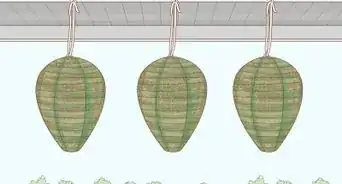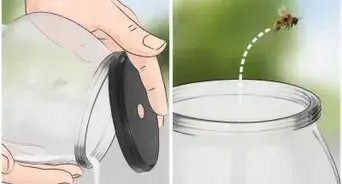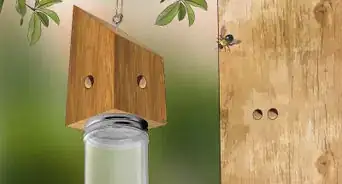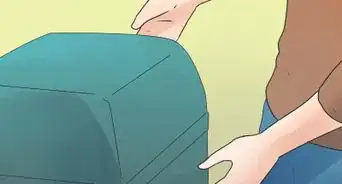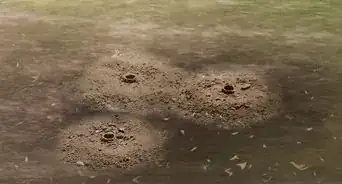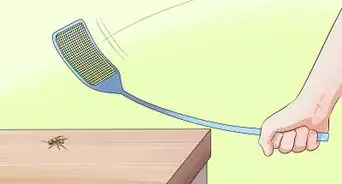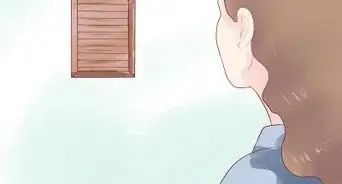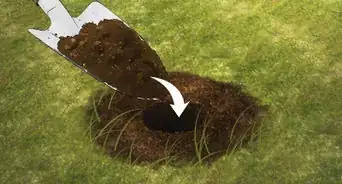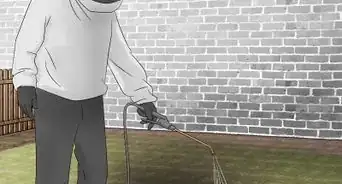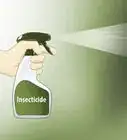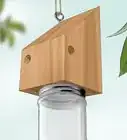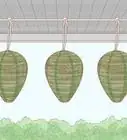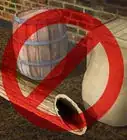This article was co-authored by Scott McCombe. Scott McCombe is the CEO of Summit Environmental Solutions (SES), a family-owned local pest solutions, animal control, and home insulation company based in Northern Virginia. Founded in 1991, SES has an A+ rating with the Better Business Bureau and has been awarded “Top Rated Professional,” and “Elite Service Award" by HomeAdvisor.
There are 15 references cited in this article, which can be found at the bottom of the page.
This article has been viewed 51,231 times.
Wasps can be frightening and potentially dangerous pests, especially if you or one of your loved ones have an allergy to them. While it’s useful to know how to get rid of a wasp’s nest if you discover one in or around your home, it’s even better to know how to keep them from moving in in the first place. Taking preventative measures like sealing openings in your home’s exterior, hanging traps, and spraying common nesting areas with fragrant essential oils will help ensure that wasps keep their distance.
Steps
Wasp-Proofing Your Home and Property
-
1Seal any openings you find in your home’s exterior. Go around the outside of your home and look closely for cracks, gaps, damaged screens or vents, or any other spots that might harbor a colony of wasps.[1] When you find a potential entry point, repair it by replacing the damaged materials or patching it with silicone caulk, wood putty, or a similar sealant.[2]
- It’s important to also seal other structures and objects that wasps might attempt to make a nest in, such as tool sheds, hollow planters, and overturned flower pots.
Warning: Don’t assume that any crack or crevice is too small for a wasp to infiltrate. The industrious insects can set up camp in even the tiniest spaces.
-
2Fill holes in your lawn and garden. Certain types of wasps (yellow jackets, in particular) build their nests in the ground. Just like you did with the structure of your home, perform a thorough inspection of your yard area, keeping an eye out for small holes or tunnels. Plug these openings with dirt or sand and pack the material down tight to keep your turf off-limits to future intruders.[3]
- This step will be especially important if you have dogs or other pets at home that like to dig.
- Never attempt to “smoke out” an underground wasp’s nest by filling it with flammable liquids. Not only is there no guarantee that this will solve the problem, it also presents an enormous fire hazard, and could have devastating consequences.[4]
Advertisement -
3Make sure all outdoor waste containers are completely covered. Garbage cans, recycling bins, compost piles and other receptacles containing traces of food or moisture are also popular nesting sites for wasps. The best way to guarantee your waste containers aren’t subject to a wasp invasion is to double-check that their lids are clamped down securely every time you put something in them.[5]
- Make it a point to replace receptacles with holes, gaps, or ill-fitting lids as soon as you notice them.
- If you continue to have an issue with wasps swarming around your garbage can or recycling bin, consider moving these containers to an indoor area, such as a garage or shed.
-
4Clean up outside food and drink right away. Anytime you decide to enjoy a backyard picnic, barbecue, or dinner on the patio, take your uneaten food dirty dishes inside as soon as you’re finished. The longer you wait, the more likely traveling wasps are to pick up the scent and move in for a closer look. If you’re unlucky,[6]
- Cover your dishes with lids, heavy towels, or plastic wrap before and after eating, and serve beverages in wide-mouthed, open containers to avoid unknowingly gulping down curious wasps.
-
5Dispose of overripe fruit from fruit trees quickly. Wasps feed on nectar, and are especially fond of items like apples, pears, plums, and berries once they’re past their prime. If you have fruit trees on your property, do a daily walk-by during the growing season to look for fallen fruit that’s begun to rot. Scoop what you find into a plastic bag, then tie off the bag and place it in a sealed waste container.[7]
- If you’re in the habit of composting fruit and vegetable scraps, bury them under other less attractive materials so that wasps can’t get to them.
-
6Knock down new nests before they have time to become a threat. If you happen to spot a nest that’s still in the earliest stages of development, it will usually be safe to destroy it. Use a broom or similar long-handled tool to dislodge the nest from the structure it’s clinging to, then throw it away or step on it to break it up completely. Disrupting a new nest while the queen wasp is away will discourage her from returning and trying again.[8]
- Wasp’s nests often resemble an inverted umbrella or balloon, with honeycombed egg cells constructed from a gray, papery material.[9]
- It’s a good idea to put on long-sleeved clothing, closed-toes shoes, thick gloves, and a protective head cover of some sort anytime you know you’ll be venturing near a wasp’s nest.
Warding Off Wasps
-
1Spray common nesting areas with essential oils to keep wasps away. Fill a small spray bottle with 3–5 fluid ounces (89–148 mL) of water, then add a few drops each of clove, geranium, and lemongrass oil and shake well. Spritz the mixture onto the ceiling and railings of your porch, the eaves of your roof, or any other nooks and crannies where wasps might seek entry. Reapply your oil concoction daily or as often as needed, especially in the warmer months.[10]
- Peppermint, rosemary, and thyme oil can make an effective substitute if you don’t have any of other listed oils handy.[11]
- In a pinch, you can also use a simple mixture of liquid dish soap, cayenne pepper, and water for quick spot treatments.
-
2Set up wasp traps in places where you’ve spotted wasps in the past. You can buy readymade wasp traps from your local home improvement store or gardening center for just a few dollars apiece. These work by luring the wasps in with bait like sugar water or fruit juice, then making it impossible for them to climb out again. Hang your traps in areas at risk of infestation, like your deck, garage, or attic.[12]
- You can also make your own wasp traps out of ordinary plastic drinking bottles.[13]
- Keep in mind that wasp traps are only designed to kill off individual wasps. They won’t do away with an already-established colony, but they can dispatch scouts that are looking to start one.
Tip: Add a few drops of dish soap to the bait in your traps to increase their effectiveness. The soap will reduce the surface tension of the liquid, making it even harder for the wasps to regain their footing.
-
3Hang up a fake nest to confuse exploring wasps. Position the decoy nest somewhere outside your home where it can be plainly seen. Wasps are naturally territorial—if they think another colony has already beaten them to a good spot, they’ll usually move and look for somewhere else to build their nests.[14]
- For maximum protection, situate your fake wasp’s nest close to vulnerable parts of your home’s exterior.
- Pick up a fake wasp’s nests at your local gardening center, or order one online. Most of these products cost less than $10.
-
4Try growing some plants that repel wasps. Fragrant plants that give like mint, eucalyptus, and citronella that give off a pungent scent have been shown to drive away bees and wasps. Plant your chosen species around the outside of your home to warn wasps not to come closer. You can also cultivate them in containers indoors near areas where you’ve spotted wasps in the past.[15]
-
5Avoid wearing white or yellow clothing when working outside. Wasps may instinctively gravitate toward these colors, thinking that they’re flowers. As much as possible, stick to dull or neutral shades when you’re preparing to mow the lawn, clear brush, or plant some bulbs. They’ll attract far less unwanted attention.[17]
- Many insects are incapable of seeing red, which makes it a good color to wear if you plan on being in your garden for long periods of time.
-
6Limit your use of perfumes and other sweet-smelling products. The same goes for body sprays, colognes, aftershave, and potent soaps and deodorants. Wasps may mistake these scents for those of their favorite flowers, and even a small amount can carry long distances on a breezy day.[18]
- Instead of your usual fragrance, try rubbing some clove, geranium, lemongrass, or peppermint oil onto your neck or wrists before heading out for a stroll in the garden.
- If essential oils aren't your thing, invest in an insect repellent that contains DEET. A common ingredient in commercial bug sprays, DEET is effective against many species of biting and stinging insects, including wasps[19]
Warnings
- Seek immediate medical attention if the pain, swelling, or redness of a wasp sting doesn’t disappear within half an hour, or if you begin to experience symptoms of an allergic reaction.⧼thumbs_response⧽
- If you happen to be stung by a wasp while scanning your property for nests, remove the stinger using a fingernail or pair of tweezers, then wash the site thoroughly with soap and water. Afterwards, apply ice to reduce the swelling.[21]⧼thumbs_response⧽
References
- ↑ Scott McCombe. Pest Control Specialist. Expert Interview. 19 November 2019.
- ↑ https://www.nytimes.com/2003/03/23/realestate/your-home-eliminating-wasps-and-their-nests.html
- ↑ https://www.naturallivingideas.com/get-rid-of-wasps/
- ↑ https://www.cbc.ca/news/canada/saskatchewan/10-tips-for-waging-war-on-wasps-1.3189061
- ↑ https://www.goodhousekeeping.com/home/a20706019/how-to-keep-wasps-away/
- ↑ https://www.goodhousekeeping.com/home/a20707173/wasp-proof-your-yard/
- ↑ https://www.greenbaypressgazette.com/story/life/2017/08/04/how-manage-wasps-during-peak-august-scavenging/540111001/
- ↑ https://www.goodhousekeeping.com/home/a20707173/wasp-proof-your-yard/
- ↑ https://sciencing.com/identify-wasps-nests-8235179.html
- ↑ https://www.goodhousekeeping.com/home/a20706019/how-to-keep-wasps-away/
- ↑ Scott McCombe. Pest Control Specialist. Expert Interview. 19 November 2019.
- ↑ https://learn.eartheasy.com/guides/natural-wasp-control/
- ↑ https://www.goodhousekeeping.com/home/a20707173/wasp-proof-your-yard/
- ↑ https://www.goodhousekeeping.com/home/a20707173/wasp-proof-your-yard/
- ↑ https://www.naturallivingideas.com/get-rid-of-wasps/
- ↑ https://www.jcehrlich.com/blog/10-plants-that-repel-bees-and-wasps/
- ↑ https://www.peta.org/issues/wildlife/dealing-household-guests/wasps-bees/
- ↑ https://www.cdc.gov/niosh/topics/insects/beeswasphornets.html
- ↑ https://www.dailymail.co.uk/debate/article-2406094/Want-ward-wasps-Wear-red-trousers--tie-paper-bag-nearest-tree-And-DONT-wear-aftershave.html
- ↑ https://www.bbc.com/news/science-environment-41042948
- ↑ https://www.webmd.com/first-aid/bee-and-wasp-stings-treatment
